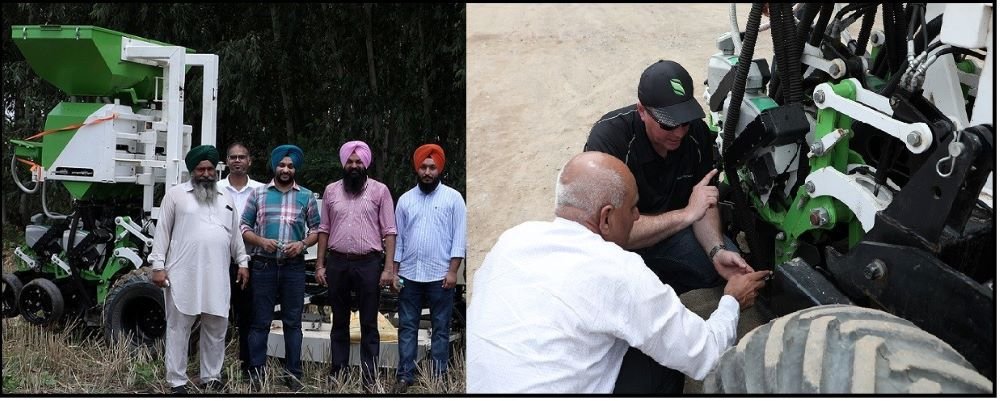Clean Seed and Chandigarh University offers technology-driven solution to stubble burning
The technology originally developed in Canada including a true single pass- no tillage row unit is designed to eliminate stubble burning and tillage in India
In a significant development which seeks to eliminate these problems for the farmers and revolutionise the agriculture sector of India forever, Canadian agricultural technology pioneer Clean Seed Agricultural Technologies is going to bring to India its advanced planting and seeding technology having far-reaching impact on the agricultural practices, gains and replenishment.
Developed over the past 10 years and patented by Clean Seed world-wide as well as in India, this globally proven seeding and planting technology is aimed at addressing key production and sustainability issues rampant in Indian agriculture. The innovative, modular, row by row technology originally developed in Canada including a true single pass- no tillage row unit is designed to eliminate stubble burning and tillage, advanced metering technologies for precision application of seed and fertilizer, as well as planter singulation options.
However, to optimise their technology and machines to suit the Indian weather conditions, and agricultural, soil and crops patterns, Clean Seed has teamed up with Chandigarh University, Gharuan. In the crucial position as the Technology Testing Partner, Chandigarh University has been field testing the Clean Seed products, constantly passing feedback on how to make these machines more India-friendly.
Chandigarh University has now hosted an exclusive technology demonstration on its Gharuan campus, where the company’s single seeding, planting and fertilizer application machine- ‘SMART Seeder MINI-MAX’ was demonstrated to a well-attended gathering, including delegates from the Agriculture Ministry of Punjab and Haryana Government, Farmer Producer Organizations and local progressive farmers. Clean Seed’s Canadian team including Company President Colin Rush, and Vice President of Operations & Product Development Jeet Jheetey was present on the occasion and gave a detailed technical and agronomic presentation at the event showcasing the technology followed by in-field demonstrations of planting into standing crop stubble. The demonstrations continued planting multiple crops including corn, soybeans, and cotton while placing fertilizer in a single pass in the Agricultural Practices Fields of Chandigarh University’s University Institute of Agricultural Sciences.
The technology originally developed in Canada including

